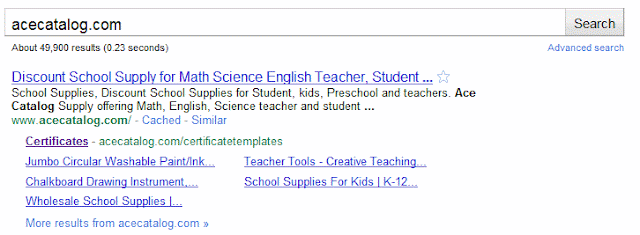Being bad to your customers is bad for business
12/01/2010 12:06:00 PM
A recent article by the New York Times related a disturbing story. By treating your customers badly, one merchant told the paper, you can generate complaints and negative reviews that translate to more links to your site; which, in turn, make it more prominent in search engines. The main premise of the article was that being bad on the web can be good for business.We were horrified to read about Ms. Rodriguez’s dreadful experience. Even though our initial analysis pointed to this being an edge case and not a widespread problem in our search results, we immediately convened a team that looked carefully at the issue. That team developed an initial algorithmic solution, implemented it, and the solution is already live. I am here to tell you that being bad is, and hopefully will always be, bad for business in Google’s search results.
As always, we learned a lot from this experience, and we wanted to share some of that with you. Consider the obvious responses we could have tried to fix the problem:
- Block the particular offender. That would be easy and might solve the immediate problem for that specific business, but it wouldn’t solve the larger issue in a general way. Our first reaction in search quality is to look for ways to solve problems algorithmically.
- Use sentiment analysis to identify negative remarks and turn negative comments into negative votes. While this proposal initially sounds promising, it turns out to be based on a misconception. First off, the terrible merchant in the story wasn’t really ranking because of links from customer complaint websites. In fact, many consumer community sites such as Get Satisfaction added a simple attribute called rel=nofollow to their links. The rel=nofollow attribute is a general mechanism that allows websites to tell search engines not to give weight to specific links, and it’s perfect for the situation when you want to link to a site without endorsing it. Ironically, some of the most reputable links to Decor My Eyes came from mainstream news websites such as the New York Times and Bloomberg. The Bloomberg article was about someone suing the company behind Decor My Eyes, but the language of the article was neutral, so sentiment analysis wouldn’t have helped here either.
As it turns out, Google has a world-class sentiment analysis system (Large-Scale Sentiment Analysis for News and Blogs). But if we demoted web pages that have negative comments against them, you might not be able to find information about many elected officials, not to mention a lot of important but controversial concepts. So far we have not found an effective way to significantly improve search using sentiment analysis. Of course, we will continue trying. - Yet another option is to expose user reviews and ratings for various merchants alongside their results. Though still on the table, this would not demote poor quality merchants in our results and could still lead users to their websites.
We can't say for sure that no one will ever find a loophole in our ranking algorithms in the future. We know that people will keep trying: attempts to game Google’s ranking, like the ones mentioned in the article, go on 24 hours a day, every single day. That’s why we cannot reveal the details of our solution—the underlying signals, data sources, and how we combined them to improve our rankings—beyond what we’ve already said. We can say with reasonable confidence that being bad to customers is bad for business on Google. And we will continue to work hard towards a better search.











